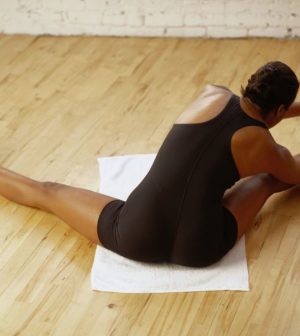- CDC Cuts Key Smoking Programs Despite Success in Curbing Smoking Rates
- RFK Jr. Touts Vaccine While At Funeral of Texas Girl Who Died of Measles
- Biden Plan To Expand Obesity Drug Coverage Is Rejected
- Most Eligible Smokers Not Getting Lung Cancer Screening
- Heart-Related Deaths More Likely During Day/Night Heatwaves
- Wildfire Smoke Increases Risk Of Mental Health Problems
- Some Folks Hit With Fees for Using Health Care Message Portals
- Diarrhea-Causing Bacteria Spreading Undetected Through Hospitals
- Ozone Pollution Increases Risk Of Childhood Asthma
- Knee Replacement Recovery Time: What You Need To Know
Exercising With Asthma or Allergies

Allergies and asthma can make exercise more challenging. But if your condition is well managed and you take a few precautions, you should be able to work out without worry.
Know your allergy or asthma triggers and exercise around them. For instance, when the pollen count is high, exercise indoors with windows and doors closed. When you do exercise outside, avoid high-allergen areas like grassy fields, parks and heavily trafficked roads.
Dry air can be particularly irritating to people with asthma while moist air often makes exercise easier. That might mean skipping endurance activities like cross-country skiing in favor of swimming in an indoor pool. When exercising outdoors, breathe through your nose rather than your mouth as much as possible — nasal passages filter air and trap allergens and irritants.
Long-distance running and high-energy basketball are among the types of exercise more likely to cause exercise-induced asthma, or what’s now called exercise-induced bronchoconstriction, or EIB. Most people with asthma experience it when airways are narrowed from exertion, according to the American College of Allergy, Asthma & Immunology.
Talk to your doctor about a regimen of bronchodilators that may help prevent EIB, allowing you to exercise with less fear of an attack. Also, a 15-minute warm-up and a 15-minute cool-down may prevent or limit the severity of exercise-induced asthma.
Never leave your home without your medications, such as a rescue inhaler or, if you’re allergic to insect stings, an epinephrine auto-injector.
And be sure to postpone your workout any time your symptoms aren’t well controlled or when you’re sick.
More information
The American College of Allergy, Asthma & Immunology has more about exercise-induced bronchoconstriction and how to better manage workouts.
Source: HealthDay
Copyright © 2025 HealthDay. All rights reserved.










